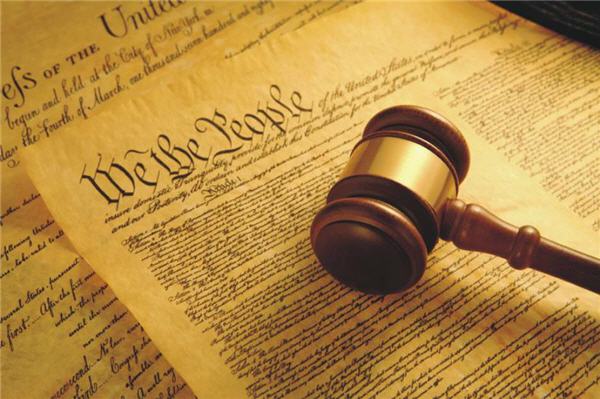
CHARLOTTESVILLE, Va. — In recognition of Constitution Day, Sept. 17, the anniversary of the signing of the U.S. Constitution, The Rutherford Institute is calling on all Americans to read the document that one historian described as “the owners’ manual to the greatest form of government the world has ever known.” Institute president John W. Whitehead is also challenging all of the presidential candidates to take a test in order to qualify for office proving that they have a working knowledge of the Constitution and the Bill of Rights.
“Thomas Jefferson once said that ‘eternal vigilance is the price of liberty.’ That vigilance must begin with an understanding of the rights enshrined in our Constitution—especially the Bill of Rights,” stated constitutional attorney John W. Whitehead, president of The Rutherford Institute and author of Battlefield American: The War on the American People. “Only by understanding what our rights are can we hope to safeguard them for future generations. All Americans, from the smallest student right up to the president of the United States of America (including president hopefuls), need to read the Constitution at least once in their lives. Government leaders should read it at least once a year.”
Surveys illustrate the need to better educate the public about their constitutional rights. For example, one survey that was commissioned by the John S. and James L. Knight Foundation found that nearly three-fourths of high school students either do not know how they feel about the First Amendment or admit they take it for granted. Another survey commissioned by the First Amendment Center reported that when asked to name specific rights guaranteed by the First Amendment, only 20% of those surveyed named freedom of religion, while 16% named freedom of the press. A survey by the McCormick Tribune Freedom Museum found that fewer than one percent of adults could identify the five rights protected by the First Amendment (freedom of religion, speech, the press, assembly and the right to petition the government). Although half could name none of the freedoms in the First Amendment, a majority (54%) could name at least one of the three judges on the TV program American Idol, 41% could name two, and one-fourth could name all three. Moreover, 21% said the “right to own a pet” was listed someplace between “Congress shall make no law” and “redress of grievances.” Some 17% said that the First Amendment contained the “right to drive a car,” and 38% believed that “taking the Fifth” was part of the First Amendment.
According to the Harris Poll, fewer than half of Americans can correctly identify the meaning of separation of powers; more than one in five identified the three branches of government as Republican, Democrat and Independent; and nearly 30 percent said they believe the judicial branch advises the president and Congress about the legality of an action before they take it. Yet as Whitehead pointed out in congressional testimony, “The Constitution provides us with the blueprint for maintaining a balanced republic, and it must always be the starting point. Each of us, from public officials to citizens, has an affirmative duty to hold our government accountable. In the end, it is still ‘we the people’ who hold the ultimate power, and with it the concomitant responsibility, to maintain our freedoms.”
No comments:
Post a Comment